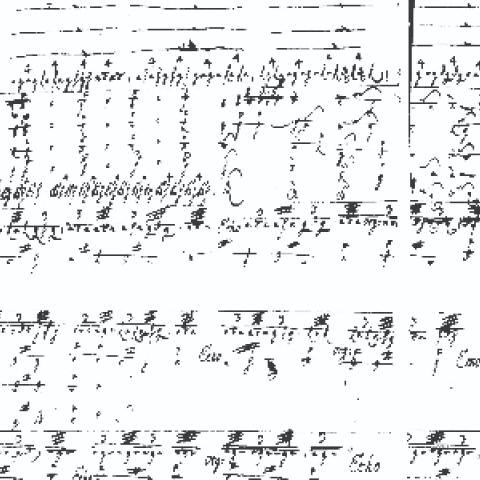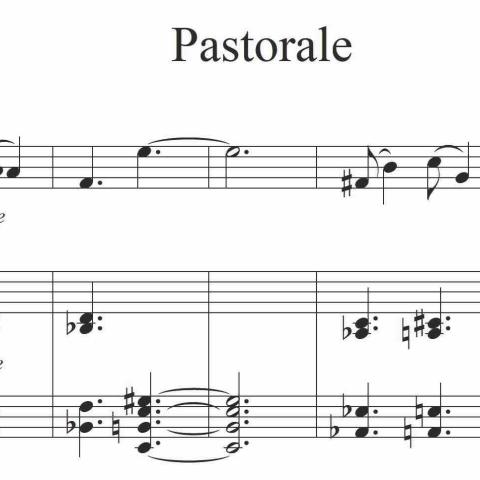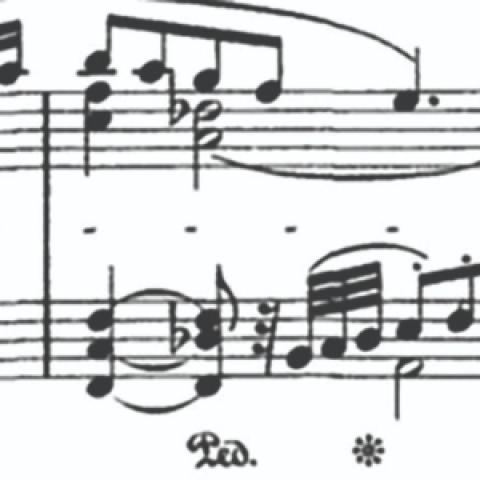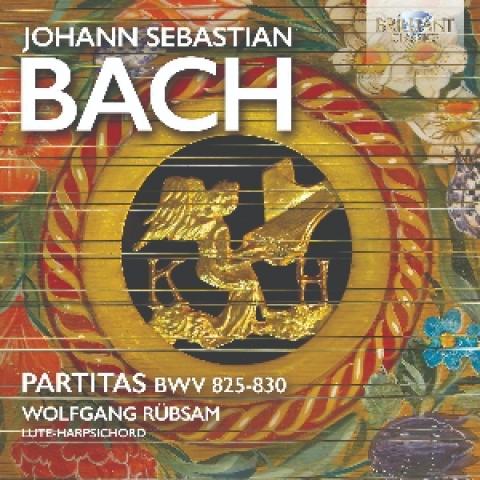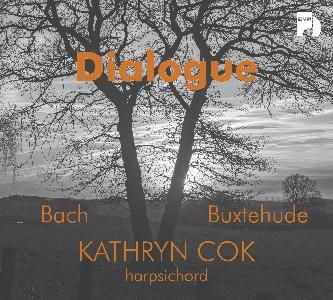
Dialogue: Bach, Buxtehude, Kathryn Cok, harpsichord. DMP Records, DVH 140431, 2022, €15. Available from dmp-records.nl.
Chromatische Fantasie und Fuge d-moll, BWV 903, Johann Sebastian Bach; Wie schön leuchtet der Morgenstern, BuxWV 223, Dieterich Buxtehude; Fantasie und Fuge a-moll, BWV 904, Bach; Fuga in C, BuxWV 174, Buxtehude; Fuge C-dur, BWV 952, Bach; Praeludium in g, BuxWV 163, Aria: Rofilis, BuxWV 248, Buxtehude; Fuge a-moll, BWV 959, Bach; Canzona in C, BuxWV 166, Buxtehude; Präludium, Fuge, und Allegro Es-dur, BWV 998, Bach; Courante Simple in a, BuxWV 245, Buxtehude; Capriccio B-dur, BWV 992, Bach.
Dr. Kathryn Cok is a native New Yorker currently living in the Netherlands, where she completed her graduate studies and now teaches at the Royal Conservatory in The Hague. She is active as a performer and researcher and currently serves as vice president of the Historical Keyboard Society of North America. As far as I am aware, this production represents her first commercial recording of late Baroque solo keyboard repertoire.
Cok presents on this recording a very interesting collection of famous and obscure keyboard works by the two most celebrated keyboard composers of the German high Baroque. The program opens with a Bach work clearly influenced by Buxtehude and a challenge: how does one approach and perform a work so often heard and familiar as Bach’s Chromatic Fantasy and Fugue? Is it even possible to bring something new to this work, studied and performed since Bach’s own time, without introducing bizarre elements (as many have tried) or otherwise deviating in significant ways from the score? In hearing the first notes, the Dutch influences in Cok’s playing are evident, particularly in the slower sections of the piece. She plays with great sensitivity, emphasizing the forward motion of the voices rather than the vertical harmonies, usually slightly delaying the upper voice. The recitativo sections are treated with subtlety and tenderness, while the rapid sections are played with flair and virtuosity. Added ornaments are always tasteful and appropriate, although her inclusion of the supertonic in the final arpeggiated tonic chord (here and elsewhere) was a fresh surprise. In short, Cok succeeds in breathing life into the work without deviating significantly from the score.
The accompanying fugue is more sedate in character, earning its epithet in the chromaticism of its theme. Bach makes extensive use of pedal points throughout the fugue in all voices. Many performers allow these extended notes to simply fade into silence or use trills to extend the pitch; Cok chooses to repeat the tied pitch at the beginning of each tied bar, sometimes alternating octaves upon repetition. Her solution keeps the harmonies active in our ears. Given these extended pedal and inverted pedal points, the parallel octave passage (pedal?) at the work’s conclusion, and other elements, I believe this work could be appropriately performed on the organ.
It is interesting that most of the Buxtehude works in the present collection have been published traditionally with the organ works and are most frequently performed on that instrument. That said, Cok makes a persuasive case for their performance on the harpsichord.
The first Buxtehude work heard, a charming setting of the chorale Wie schön leuchtet der Morgenstern (BuxWV 223), is one such case. It is sectional, with each line of the chorale treated in contrasting style. In performance on the organ, it is easy to facilitate these contrasts by changing manuals or registration. In this performance, the resources of the harpsichord provide the ability for similar dynamic contrasts.
The next Bach work, while similarly titled Fantasie and Fugue, could hardly be more different than the Chromatic Fantasy and Fugue. The Fantasy and Fugue in A Minor, BWV 904, is a more serious and profound work, likely a product of a later time. The first movement is a prelude in fairly strict, mostly three-, although sometimes expanding to four- or five-voice counterpoint. The fugue is a splendid double fugue, with both subjects combined at the conclusion. It is a work that appeals to the mind as much as the ear and was a wise choice to show contrast with the much earlier chromatic pair. Interestingly, the second theme of this fugue is a descending chromatic line, thus an inversion of parts of the subject of the D-minor chromatic fugue.
Three other great works of Buxtehude (alternating with Bach works on the CD) are also drawn from the organ repertoire. These are the famous “Gigue” Fugue in C Major, BuxWV 174; one of the large stylus phantasticus praeludia, BuxWV 163, this one in G minor; and the lesser-known Canzona in C Major, BuxWV 166. The fugue is a rollicking delight, briskly performed by Cok. Both the G-minor praeludium and the Canzona in C are extended dramatic works in stylus phantasticus with alternating imitative contrapuntal sections and free dramatic flourishes. Cok has clearly mastered this style, performing these works in a highly improvisatory manner, with bold contrasts in registration and tempo and lavish embellishments.
Cok has included two relatively obscure Bach fugues, found among those many works buried in the appendices of the Bach Gesellschaft and mostly ignored for generations. The Fugue in C Major, BWV 952, is not a particularly interesting work in three voices. The subject is one of those instrumental-type “sewing-machine” subjects that rambles on in a sequence before finally finding an answer. The counterpoint and harmonies do suggest the work of the young Bach—indeed, the successful working out of the piece implies a somewhat later date of composition—but the lack of musical creativity suggests the work of a lesser mind, perhaps the exercise of a young student or even a youthful Bach son. The performance is quite fine, bringing as much life and interest to the work as is possible given the rather feeble source material.
The Fugue in A Minor, BWV 959, brings us into another world altogether. It is a fugue à 3 with occasional chords expanding to four voices. One immediately notices in comparison with the previous fugue the more interesting and intriguing fugue subject, ripe with possibilities. There are many “un-Bachian” elements to be found in this work, unlike the previous straightforward C-major fugue, which surprise the listener on first hearing and mark it as a product of his earliest productive years. In earlier times the authenticity of many of these early “quirky” works was questioned by scholars simply because “there’s nothing else like it in the canon.” One need only to study works such as the famous Toccata in D Minor, BWV 565, Chromatic Fantasy in D Minor, BWV 903i, Passacaglia in C Minor, BWV 582, the Pastorale in F Major, BWV 590, the Piece d’orgue, BWV 572, the canzona, the capriccios in B-flat major and E major, and many others, to realize that Bach was experimenting and often composed only one example of a form, genre, or style.
This experimentation is equally evident within works, with almost unlimited experimentation in harmony, modulations, scales, manual (and pedal) figurations, endings, etc. These striking and unusual techniques allow us to follow his compositional matriculation as they merge and evolve into more mature music.
This is a lengthy way of saying that I have no problem accepting this curious and creative work as the effort of a youthful Johann Sebastian Bach, despite its eccentricities. I do not know for certain, but I suspect it was these same quirky eccentricities that attracted Cok to this work and inspired her to this dynamic and dramatic performance, which succeeds without overemphasizing the more unconventional elements.
The two remaining works by Buxtehude included in this recording are both variation sets, published in modern editions not among the organ works, but with a collection of traditional keyboard suites presumably intended for performance on harpsichord or clavichord. Seldom performed, these suites and variations for keyboard are far less well known than are Buxtehude’s brilliant and justly acclaimed so-called “organ works” (and that’s an article for another day).
According to Emilius Bangert, publisher of the first modern edition of these suites and variations (Hansen, 1941, suites only republished by Dover), the tune Rofilis “is a melody from Lully’s Ballet de l’Impatience; it became widely known, and already in the seventeenth century was used in Denmark as a hymntune.” Without an initial statement of the unadorned tune, Buxtehude provides a set of three brief (sixteen-bars without repeats) variations in Aria: Rofilis, BuxWV 248, a work that requires subtlety rather than virtuosity. The entire work is scarcely two minutes in duration, but it is ample time to demonstrate Cok’s ease with this style. Her playing here is a fine example of pure musical poetry.
The roots of the final Buxtehude work in this collection, Courante Simple, BuxWV 245, are more shrouded in obscurity. It is immediately a larger-scaled work than Rofilis, with more variations exploring higher technical and stylistic demands. The variations tend to increase in complexity as they progress, allowing Cok to again demonstrate her subtlety, creativity, and virtuosity at the keyboard.
The final music of Johann Sebastian Bach included in this delightful collection comprises two major works, both well known. Heard first is the Prelude, Fugue, and Allegro in E-flat Major, BWV 998. This work has been a standard of the keyboard repertoire at least since Wanda Landowska recorded it on her Pleyel harpsichord in 1949, but it is actually catalogued as a “lute work” in Wolfgang Schmieder’s Bach-Werke-Verzeichnis catalog. There have always been questions about this group of so-called “lute” works, even though lutenists have played them, and guitar transcriptions and performances have been popular since the days of Andrés Segovia. The manuscript of the E-minor lute suite includes a notation at the top of the page reading aufs lautenwerk. The lautenwerk, a gut-strung keyboard instrument designed to imitate the sound of the lute, was supposedly invented by Bach himself, and his post-mortem instrument inventory suggests that he possessed two of them. Although no historical examples are known to exist, several modern instrument builders have constructed modern lautenwerke based on surviving descriptions. In style, all of the lute works are similar, typically featuring a flowing melody in one voice or two, accompanied by a walking bass line in slower notes, and/or passages of style brisé. They are seldom contrapuntally complex, with voices being fragmented even in fugues.
Under Cok’s fingers, the leisurely prelude is pure poetry. The melody sings, and there is just enough flexibility of rhythm and agogic to keep the music flowing and engaging the listener. Likewise, the fugue is brought to life in a tranquil way, allowing us to anticipate and appreciate each entry of the theme.
When the mood suddenly changes, Cok makes the shift in style without a noticeable bump. The return of the original section restores tranquility. The final “Allegro” is an outburst of joy, and Cok brings the whole work to an exciting, rollicking conclusion.
Arguably the earliest popular instrumental work by Bach is the so-called Capriccio sopra la lontananza del suo Fratello dilettissimo, BWV 992 (“Capriccio on the departure of his beloved brother”), the work with which Kathryn Cok concludes her recorded performance. It was written for the occasion of his brother Johann Jakob’s departure to serve the King of Sweden. The work is in six sections, each relating in a programmatic way to the departure:
1. Arioso: Adagio, “Friends Gather and Try to Dissuade Him from Departing;”
2. (Andante), “They Picture the Dangers Which May Befall Him;”
3. Adagiosissimo (or Adagissimo), “The Friends’ Lament;”
4. (Andante con moto), capriccios “Since He Cannot Be Dissuaded, They Say Farewell;”
5. Allegro poco, “Aria of the Postilion” (Aria di postiglione);
6. “Fugue in Imitation of the Postilion’s Horn” (Fuga all’imitazione della cornetta di postiglione).
Due to the youthful genesis of the work, it lacks many elements of the style of the mature Bach. Yet it has remained a standard of the harpsichord repertoire at least since it was popularized by recordings released by both Wanda Landowska and Ralph Kirkpatrick in the late 1950s. It is easy to see how this work has far surpassed most of Bach’s early keyboard works in popularity, given its obvious charm and the documented transmitted program. Textures vary from simple figured-bass passages to full-fisted chords in some cadences. Quite a bit of ornamentation is notated in modern editions, but given the provenance of its multiple sources, it is unclear how much of it actually originates with the composer.
Like much of the music of Buxtehude and the young Bach, it requires great freedom and imagination to interpret successfully in performance. Throughout this entire program, Cok has demonstrated repeatedly that she has mastered the art of the stylus phantasticus. Her performances show thoughtfulness, creativity, subtlety, and virtuosity—all in the service of the music.
The harpsichord heard in this recording, built by Titus Crijnen in 1999, has a rich and resonant sound, superbly captured by the recording team. Kathryn Cok’s spirited and musical performances throughout this disc make recommendation easy. She is an artist of considerable skill, and this compact disc recording should only serve to further her already impressive reputation.

